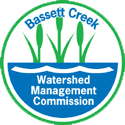News
Harrison Boulevards Bloom
Thu, Nov 30, 2017A year ago, Joelle Van Gaalen noticed that someone had taken the time to put in native plants along the streets at Redeemer Lutheran Church, near her home in Minneapolis.
That was how she first learned about Blooming Boulevards, a project to repurpose the little strips of earth between the sidewalks and the streets in the Harrison neighborhood into pollinator-friendly landscaping designed to prevent water pollution. The plantings at the church were a demonstration site.
The impetus for the project came from city plans to cut down ash trees on the boulevards. Metro Blooms looked at the raised, hard-packed ground beneath the trees and saw an opportunity. At the time, rainwater and melting snow ran off, collecting city dirt as it flowed down sidewalks and streets into public sewers that emptied into and polluted nearby Bassett Creek. Why not sow the seeds for a community-based program to beautify the boulevards, create habitat for bees and other pollinators, and divert storm water all at the same time?
The way to do this was to dig into the ground slightly, creating a depression, and put in deep-rooted plants—many native—chosen for their hardiness and ability to drink, as well as for their attractiveness to pollinators. Instead of flowing away, storm water would infiltrate the ground. The plants would take in some water. The rest would be cleaned naturally as it filtered through the earth. Further, the boulevards could be seeded with pollinator-friendly grasses such as fescues or a bee-lawn mix; once established, the landscaping would also be mowable.
Metro Blooms partnered with the Bassett Creek Watershed Management Commission, the Metropolitan Council and the Harrison Neighborhood Association.
Van Gaalen agreed to be a volunteer boulevard captain for the effort. Over the spring and summer, she worked with Metro Blooms and the neighborhood association, knocking on doors and holding block parties to publicize the project. The goal was to let neighbors know that they could have habitat for clean water and pollinators installed in front of their house for free—as long as they were willing to take care of it.
“That was our challenge,” Van Gaalen said. “Selling it to the neighborhood, and saying, ‘hey you do have to maintain it.’”
Some people were interested from the beginning. Others weren’t so sure, but changed their minds when they saw the native grasses, low-growing wildflowers, violets, strawberries and other plants in front of their neighbors’ sidewalks.
The workforce for installing the landscaping was locally-sourced, focusing on summer jobs for youth. Hennepin County Green Partners trained youth workers during installs. Other local contractors that worked on the project included the Northside Economic Opportunity Network, Wilderness Inquiry, Minneapolis STEP-UP, and the Conservation Corps of Minnesota. Nearby Utepils Brewing organized planting drives through its volunteering club.
It was a very busy growing season. Blooming Boulevards grew from the first demonstration project at the church to 37 boulevard sites in the neighborhood, totaling 10,825 square feet of pollinator and clean water habitat.
“In the future, we hope that these beautiful blooming boulevards that capture runoff and provide pollinator habitat will provide an example that can be replicated across the city,” said Becky Rice, executive director of Metro Blooms, “wherever the opportunity presents itself as ash trees are removed over the next five years.”
Rice anticipates continued activity to generate local jobs for youth. “We will also work with Redeemer Church to provide training in weed identification and vegetation management techniques,” Rice said. “We want local youth to learn the skills to maintain the boulevards at Redeemer and to be able to help project participants in the neighborhood.”
Community participation is a key part of the project, which is designed to build resilience and to promote equitable development and environmental justice in this Near North community. Metro Blooms has been intentional about meaningfully involving people who live here to ensure that they benefit from the investments that funding partners are making.
Van Gaalen has lived here for two-and-a-half years and already knew many of her neighbors. But she was struck by how many people she has met who have lived here for decades and are strongly committed to the neighborhood—but have just never had the opportunity for improvements that this project offers.
She is already looking ahead. “It’s going to be exciting to see everything blooming in the spring,” Van Gaalen said. “I’ve been really impressed with everybody’s willingness to jump in.”
The next phase of the Northside Neighborhood Engagement & Opportunities in Clean Water Initiatives (NNEOCWI) involves working with commercial and institutional property owners in the Glenwood Corridor.
"I am excited about the potential to weave together land use, economic/workforce development, and other infrastructure investments that lead to improved livability and increased environmental empowerment in this Near North community," said Kimberly Carpenter, Community Engagement Coordinator at Metro Blooms.

